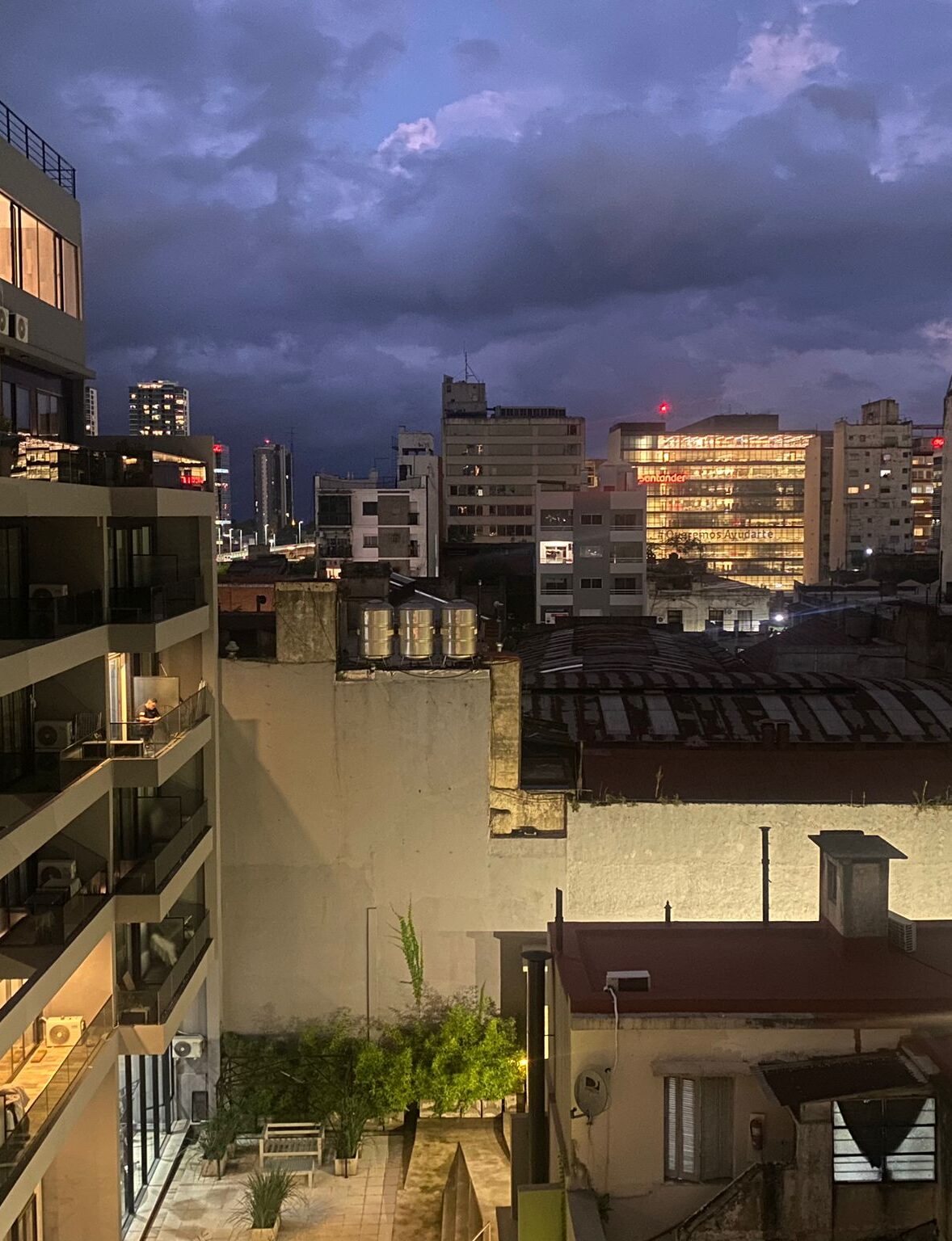
On my final day in Derry, a city barely inside the northwest edge of Northern Ireland, I hired a taxi to drive me past the city’s boundaries and across the United Kingdom’s border. Through the window, the Republic of Ireland was all endless rows of barley like coiled rosary beads. I wanted to see the Grianan of Aileach, a stone ringfort originally built almost fifteen hundred years ago by the Celtic king who then ruled Donegal’s hills.
The Grianan was small, sixteen feet high and seventy-six in diameter, but so powerful at the top of the green hill, backdropped by a swirling gray sky heavy with rain. In practice, the fort’s circular form would have been made it an ideal defensive architecture, providing sweeping views on all sides. Perhaps more importantly, the Irish also believe that round structures—from burial mounds to Stonehenge-style rings—are the ideal dwelling places for spirits. To reach the base of the Grianan’s hill, we circled through a few of Ireland’s innumerable roundabouts; to ascend, we looped slowly up and around the hill, the taxi’s path emulating the commanding, mystical circle of the fort.
The Grianan receives some tourists on sunnier days, but, unlike the sites in Ireland’s more populated east, there I knew it would be possible to find myself alone. That’s because this ancient structure overlooks what was once the most dangerous and underdeveloped strip of land in Europe. Thirty years ago, the border between Ireland and Northern Ireland was the site of contest in the Troubles, the North’s devastating Civil War. Shootings and bombings were a daily threat along its length. The border, strictly enforced, also created profound economic hardship in the communities it arbitrarily bisected.
Since the 1998 Good Friday Agreement put an end to the Troubles, these farmlands are as peaceful as any in Europe, and I didn’t even bring a passport to cross the border. That doesn’t mean this area’s reputation has changed. At the hill’s summit, I noticed a small sign listing the fort’s opening and closing hours. The sign felt extraneous: there was no guard or gate to keep anyone out. There was nobody there at all.
The Grianan is composed of thousands of irregularly-sized, mossy-sheened stones. In the twelfth century, the original fort was destroyed by a competing king. It remained a pile of rubble for six hundred years after that. The task of restoring the fort must have been enormous: I couldn’t imagine gathering all this rubble from the hilltop, placing each stone back in its position on the perfectly balanced drywall.
As I approached the Grianan, I saw that its rough cylindrical exterior obscured three terraced layers on the inside, with slippery stone steps that carried me to its third and highest ridge. The infinite curve of the circle called me to continue walking, now faster, around its terraces. Breaking into a run, I ignored the wind that whipped my hair around my face and threatened to pull me from the narrow, weed-lined ledge. I felt powerful claiming this structure, a dwelling-place of ancient kings, for myself.
***
That morning at my B&B, over a full Irish breakfast of fried egg, grilled tomato, bacon, mushrooms, baked beans, and coffee, I had been reading The Rule of the Land, a memoir of cartographer Garrett Carr’s trip along the Irish border. In his memoir, Carr describes a visit to another megalithic monument, a tomb called Giant’s Grave, built from huge slabs of ritually cupmarked sandstone, that sits atop the Cavan Burran Plateau on the Republic side of the border seventy miles south of Derry.
“It is not just the plateau’s elevation that preserves these and other relics, it is the border,” Carr writes. “The Cavan Burren has more treasures than some of the more celebrated sites in Ireland, but they sit unvisited mostly. If the border did not run over this plateau there would be tour buses parked in its shadow, a shop and a busy visitors’ centre.”
The same thing is true, I imagine, of the Grianan. In an irony as great as these sandstone monuments, conflict preserves.
***
As I got back into the taxi to leave the Grianan behind, the rain came. On the drive back to Derry, the driver was listening to a radio show in which several people were discussing the Brexit vote. None of them knew what would happen to Ireland now, with half of it in Europe, half of it somewhere else. A man with a heavy Belfast accent suggested that the Troubles would have to start up again, once the border hardened. A woman cut in quickly, disagreeing: “It’s all settled down now ya know. Border doesn’t mean the Troubles are coming back.”
On a winding road between wire fences and fields of sheep, we crossed the border again.
Annabel Barry is a junior studying English at Princeton University. This summer, she researched and wrote nonfiction in Irish border communities, with an award from Princeton’s Lewis Center for the Arts. At Princeton, Annabel has been the recipient of the Frances Biddle Essay Prize and the Class of 1883 English Prize, and is the Managing Editor of the Nassau Literary Review.
Photo by Flickr Creative Commons user Pascal Potier




